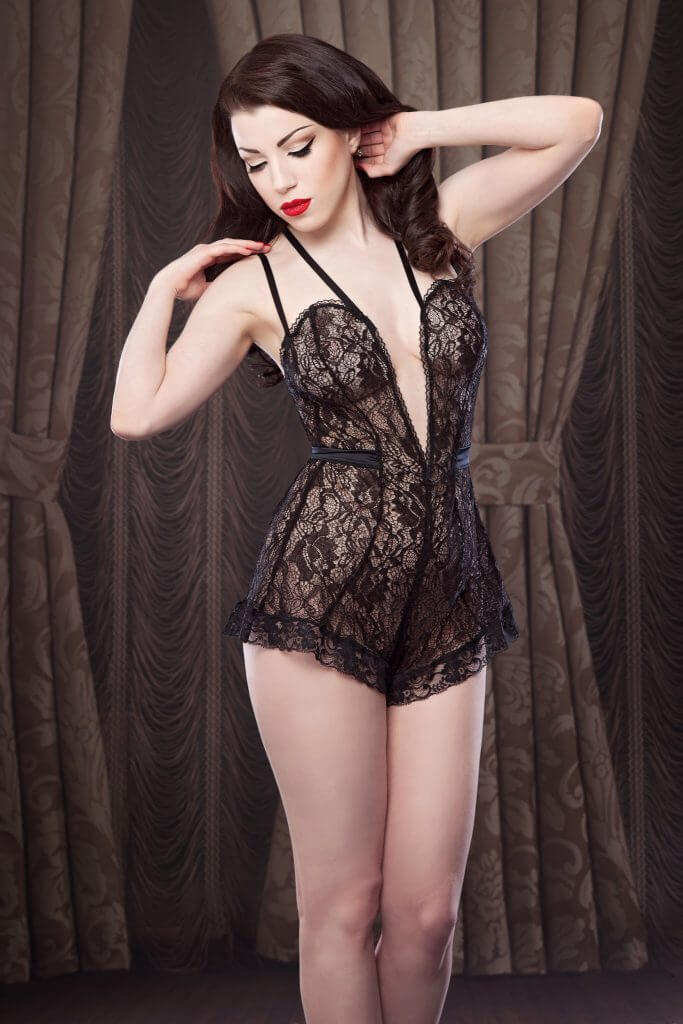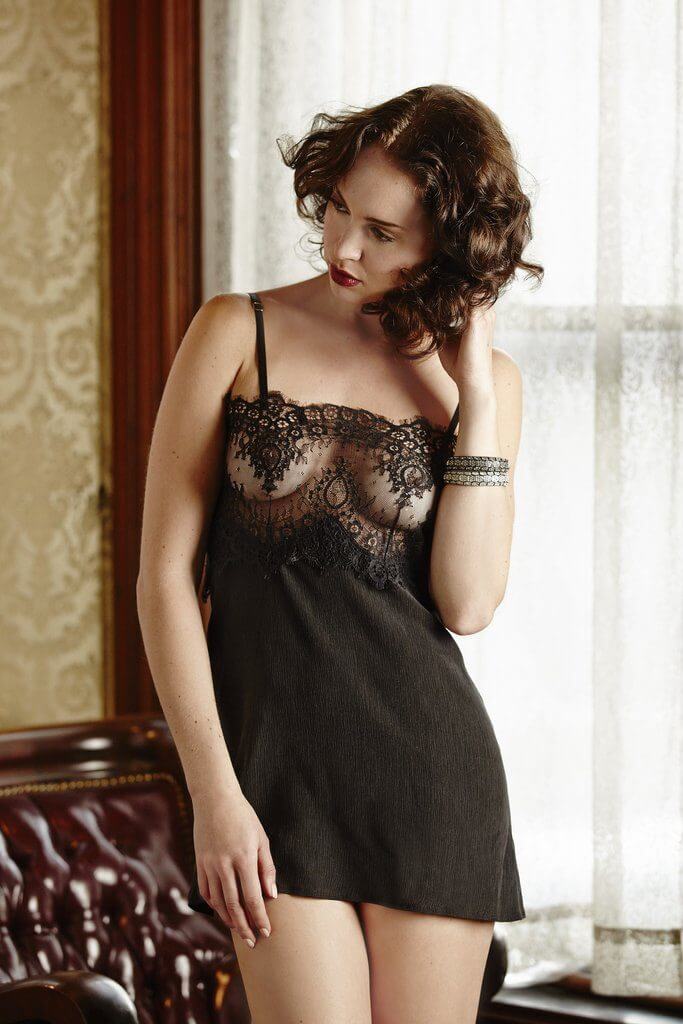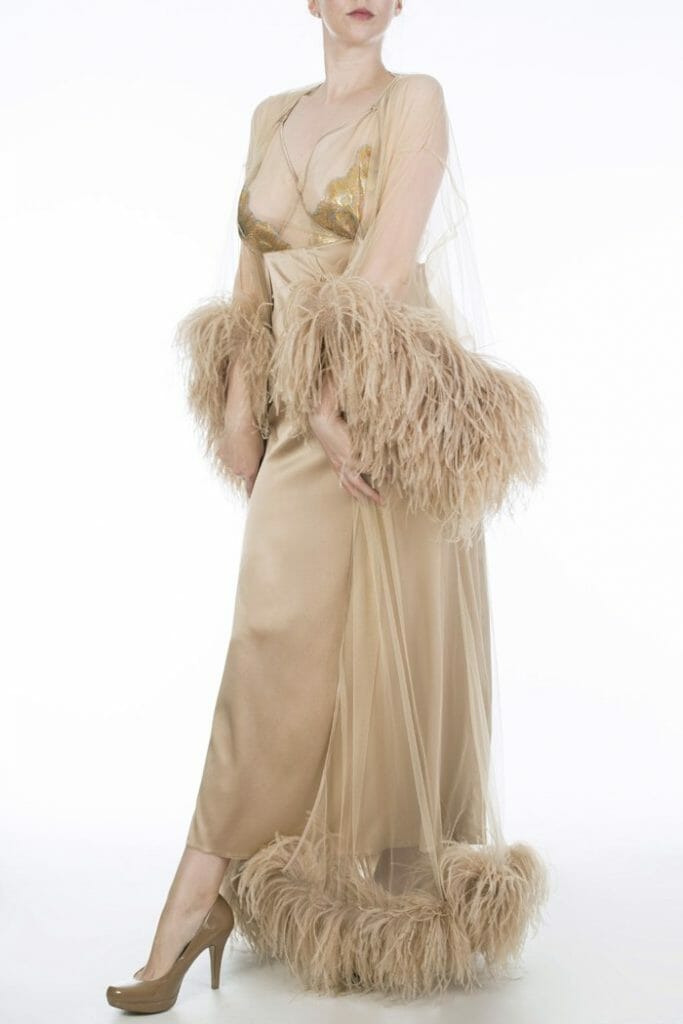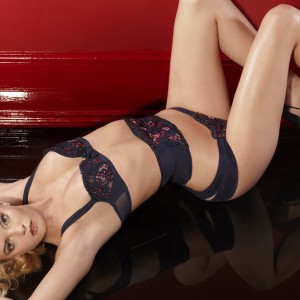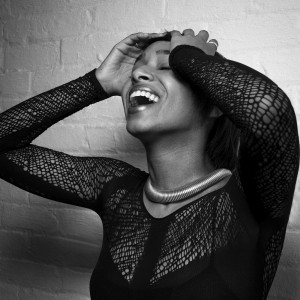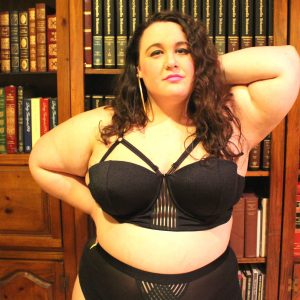Pre-Code Hollywood Lingerie: Underpinnings from 1929-1934
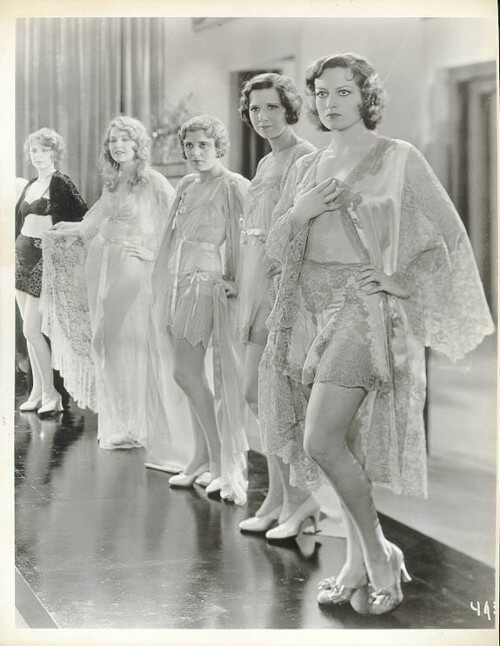
Our Blushing Brides 1930. I love this photo because it shows so many lingerie styles from the Pre-Code Era. We see bralettes, robes, tap pants, chemises, all with extraordinary applique and inset detailing. The full lace sleeves and lace hem you see on the robe Joan Crawford wears at the front would be outrageously expensive today.
Pre-Code Hollywood is seen by many critics as one of the greatest eras in American cinema, and while I'm certainly no movie buff, when it comes to fashion and costume design, I'm inclined to agree.
In case you're unfamiliar with the term, "Pre-Code" refers to films made between the introduction of sound and the mandatory enforcement of Motion Picture Production Code censorship guidelines (known colloquially as the "Hays Code"). Pre-Code films were bawdy, risque and irreverent, exploring everything lesbian relationships to drug use, sex work and extramarital affairs.
While that may seem a bit anachronistic at first, the era of Pre-Code cinema also overlaps with the Jazz Age, the rise of Flappers, increased availability of birth control, and the transition of some women into white collar jobs, which were often located in cities.
Now that the trailing skirts and cinched corsets of the Edwardian Era were no longer in fashion (and never would be again), a new kind of lingerie came into a focus. Looser and more provocative with higher hems and fewer layers, this style of lingerie was scandalously close to naked, replacing the layers of chemises, knickers, corsets, corset covers and petticoats that encompassed lingerie for previous generations.
It's hard to convey just how much of a complete reversal the underfashion aesthetics of the 1920s were to the Edwardian Era. From heavy corsetry that had to be professionally made to simple patterns that were mostly unlined rectangles, these new intimates were a radical departure from established lingerie traditions.
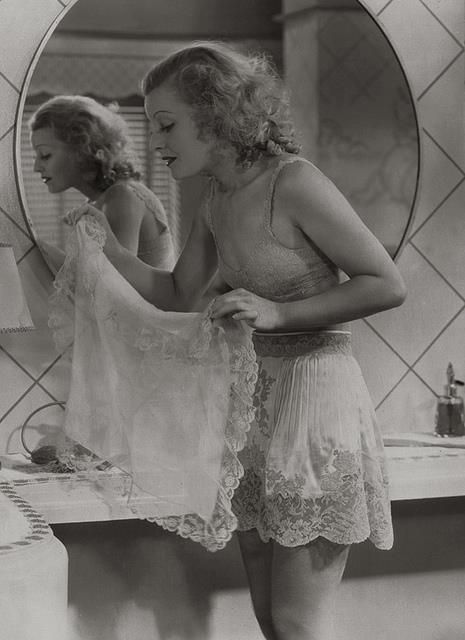
Lilian Harvey during the Pre-Code Era. While this image isn't from a film (at least one I could find), it's an excellent example of lingerie from this time period. In particular, note the soft cup, unstructured bra which is very similar to contemporary bralettes.
Widespread use of machine-made lace and the development of synthetic fabrics (such as rayon, then known as "artificial silk") also meant the concept of mass-produced luxury was beginning to take off. Beautiful, comfortable lingerie was no longer the sole domain of the very wealthy, and an increase in the number of lingerie colors available - not just black and white, but also peach, mint, and eau de nil - also increased their fashion appeal.
Rompers, chemises, bralettes, and tap pants - all items in the new lingerie wardrobe - did not require a lady's maid to get into or out of, and could be washed, repaired, or even completely made at home. The changing role of women in society is reflected in the underfashion. It's a brilliant example of sartorial trends mirroring cultural shifts.
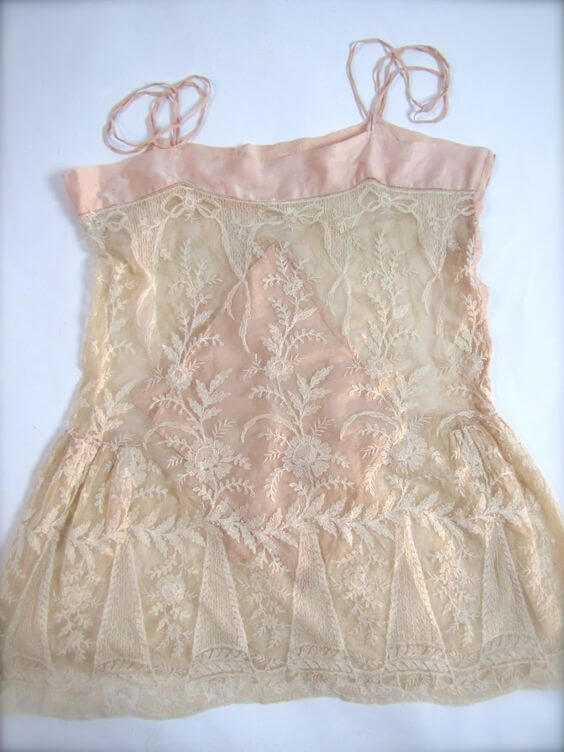
1920s chemise via Salon of the Dames. Look at this gorgeous lace. I'm genuinely breathless. And there's so much of it; that beautiful repeating pattern is front and center. You can also easily see that simpler, rectangular silhouette that dominated lingerie fashion post-WWI.
Of course, we all know the Roaring Twenties led to the Great Depression, but instead of being diminished, the escapist, fanciful nature of cinema was amplified, especially in costume. There's an element of over-the-top opulence to many movie costumes from this era, perhaps meant to be a distraction from everyday life.
While many of these pieces would be irreproducible today due to the expense involved, even in their era, they would not have been cheap. Costume design at this time was unfathomably lavish, with many studios having their own in-house costume departments to make everything custom for each individual actor.
Full sleeves, lace applique, fur trim, crystal pleating...these details were incredibly labor and time intensive, requiring dozens of hours per garment. Yet Pre-Code Cinema has some of the most fantastic examples of lingerie artisanship I've ever seen.
As a woman living in the 21st century, it's startling how many pieces from this era would be right at home on the runways and in the lingerie drawers of today. The emphasis on drape, comfort, and a natural silhouette is quite similar to this era's athleisure, bralette and romper trends. In addition, loungewear, especially robes and pajamas, is coming back in a big way. I can't help but wonder if there are similar changes in today's social climate sparking that return to historical forms.
Of course, I don't want to portray the 1920s and 1930s, as either a cinematic or a historical era, as an ideal. I'm in love with the clothes, and that is where my romance begins and ends. The 1920s and 30s were a regularly horrible, traumatic, and even gruesome era for millions of people. No amount of hand-finished stitching or antique lace can change that, and my nostalgia isn't at all for this period in history, but rather for the intricacy in lingerie construction and detailing that's been lost to memory.
I would be wrong to finish this article without mentioning where you can find pieces with a similar spirit today. Betty Blue's, Karolina Laskowska, Shell Belle Couture, Carine Gilson, Dottie's Delights, Evgenia Lingerie, Kiss Me Deadly, Rosamosario, I.D. Sarrieri, Harlow & Fox, and La Perla are all excellent places to start your search. Most of these names are luxury brands, and that's because the techniques and materials they're using (intricate lace appliques, volumes of silk, etc.) are only possible for garments in the 3 and 4 figures. However, ebay and Etsy are always worth a look, especially if you're okay with previously owned items.
I hope you enjoy this trip to the lingerie past as much as I enjoyed compiling it. What's your favorite look from the scenes below?
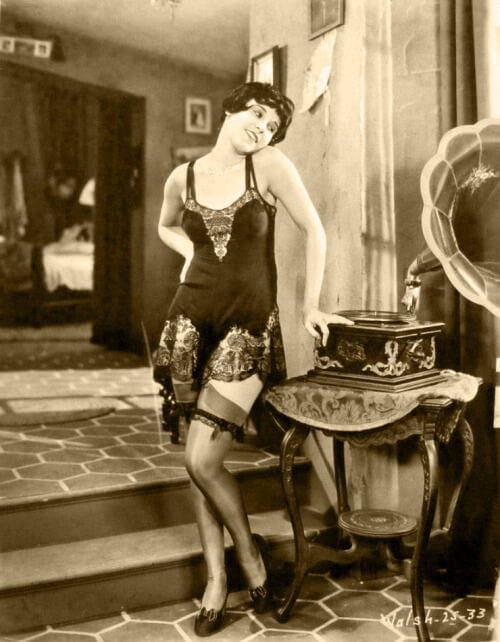
Hot for Paris, 1929. A perfectly darling all-in-one or step-in (what we call a romper today) that would be completely at home a modern day lingerie drawer. Notice how the sheer lace exposes the leg up past the hip. Utterly scandalous and precursor to the debut of the bodysuit a couple of decades later.
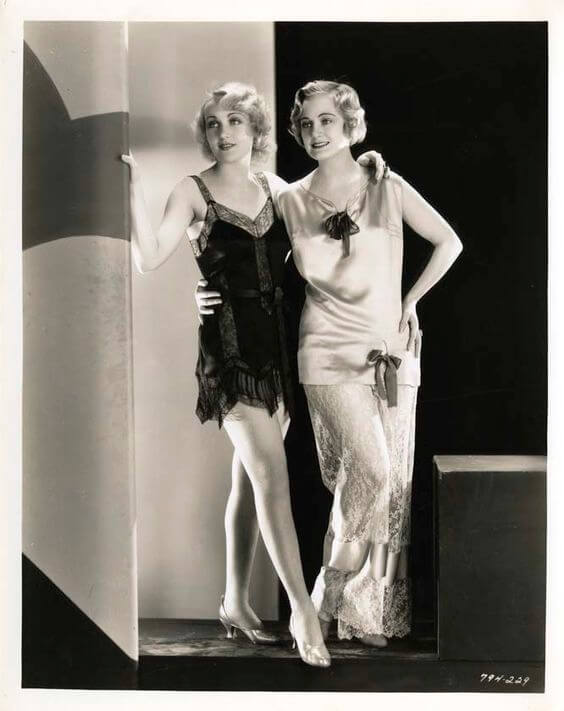
Safety in Numbers, 1930. The only example of pajamas on this list, pay special attention to the lace pajama pants. Lace pants are more likely to be used as a beach coverup nowadays than loungewear, but leisurewear and beach attire were the only acceptable ways for women to wear pants in the early decades of the 20th century. Eventually, that acceptability migrated out of doors - similar to today's progression of bralettes and yoga pants being acceptable streetwear attire.
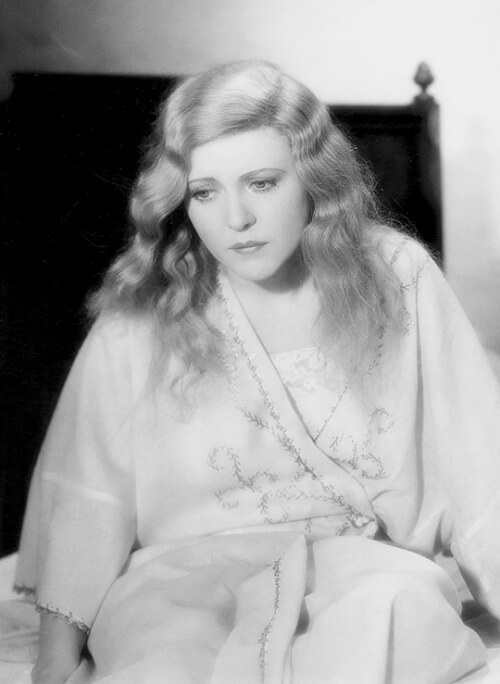
The Right to Love, 1930. The robe from this film is almost understated compared to the other pieces in this article, but I especially love the fine needlework here. In modern lingerie, this sort of embroidery would be replaced with a print, primarily for cost reasons.
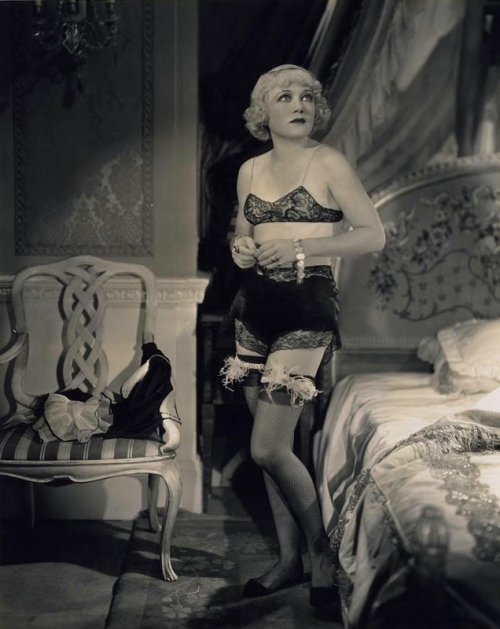
If I Had A Million, 1930. Another brilliant example of how bralettes and bandeau bras aren't a new trend but have been around for the better part of a century. That said, my favorite thing in this photo has to be those feathered garters!
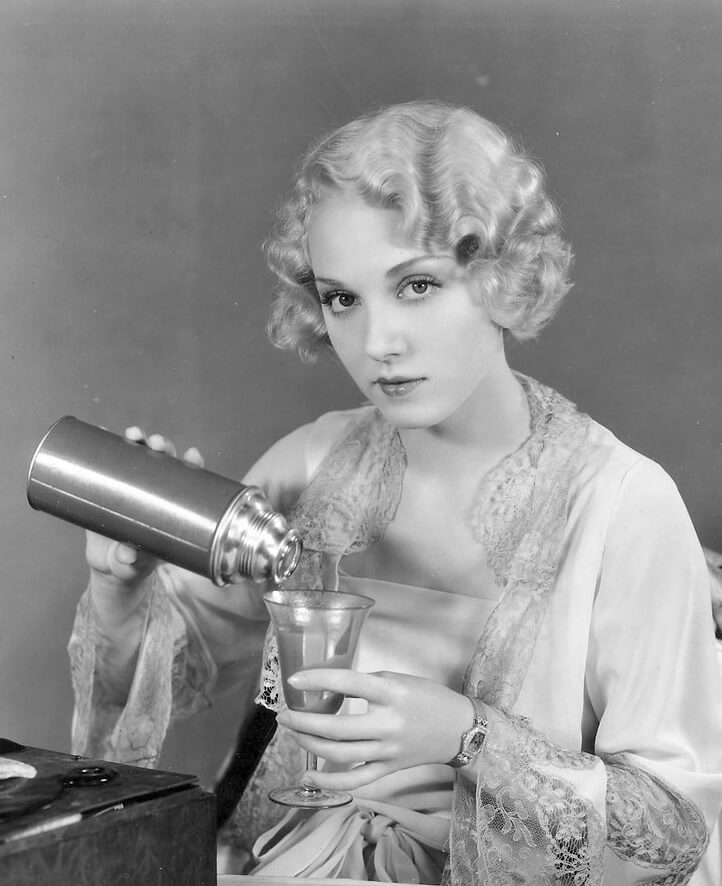
The Bishop Murder Case, 1930. The sleeves on this robe are stunning and remind me of the contemporary label Shell Belle Couture. It takes a number of very small, fine stitches to attach such delicate lace.
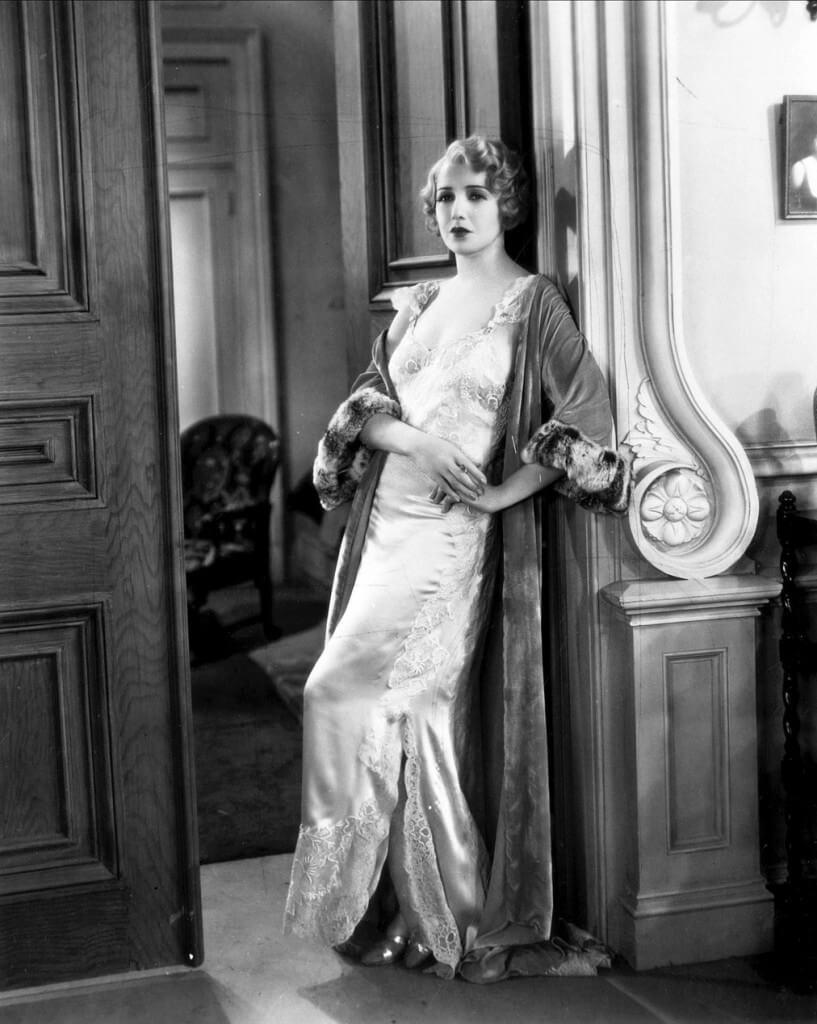
The Maltese Falcon, 1931. Everything about this photo perfectly encapsulates the luxury lingerie aesthetic of Pre-Code Era cinema. It just oozes lavishness and sensuality. Note in particular the floor length velvet robe with fur trimmed sleeves (likely silk velvet), and the ankle-length gown (probably also silk).
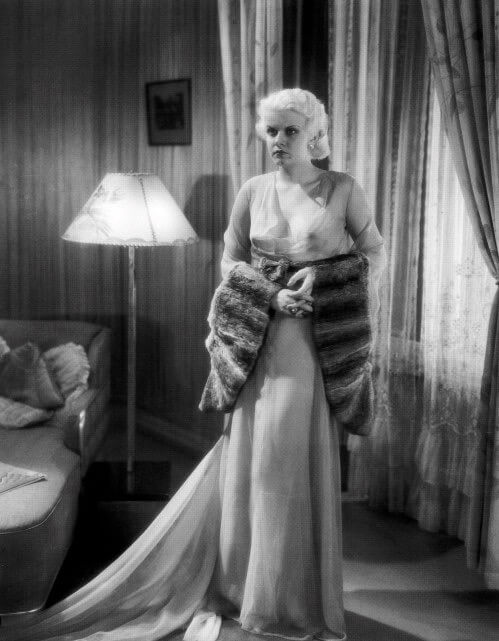
Iron Man, 1931. There's another reappearance of fur sleeves here, but what I most love most about this image is the sheerness of the fabric. That lightness and airiness combined with hint of nudity feels completely contemporary, and shows better than any other photo in this series just how erotic Pre-Code films could be. From a fashion history perspective, note also the draping of the fabric. There's a shift from the boxier silhouettes of the 1920s to the bias cuts of the 1930s, and you can see that transition here.
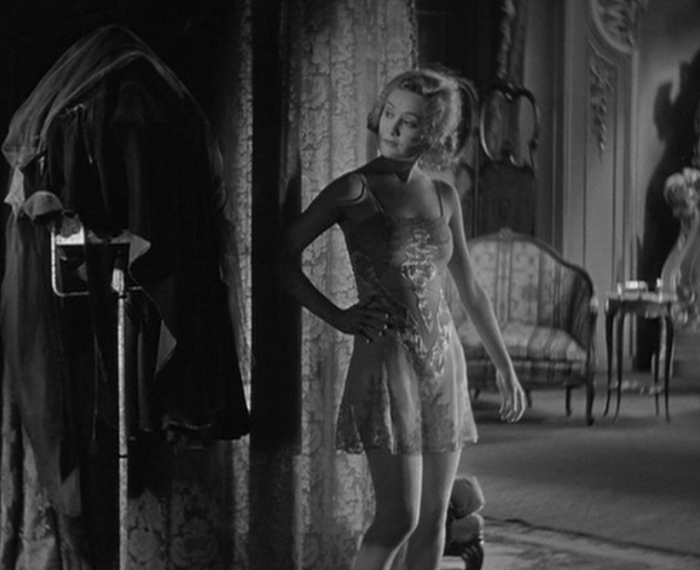
The Smiling Lieutenant (1931). Via Pre-Code.com. It's difficult to see from this screen capture, but there's quite a lot of fabric inset work happening here. I feel almost certain I've seen something similar recently in sheer mesh and lace.
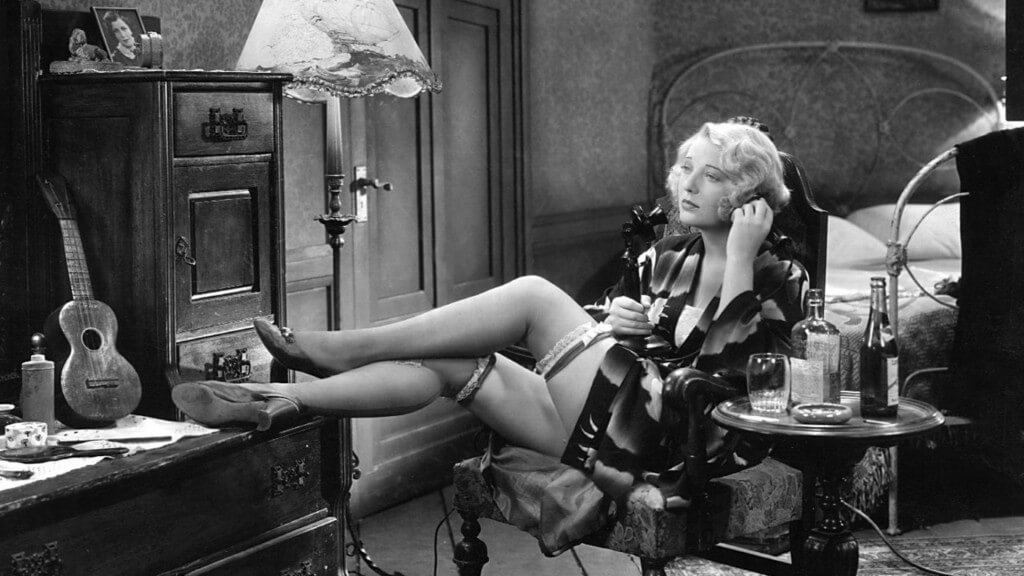
Safe in Hell (1931). Full disclosure: this is the photo that made me want to write this article. From the print to the cut, the robe in this image is a perfect example of how modern day lingerie trends overlap a not small amount with what was popular in the 1930s.
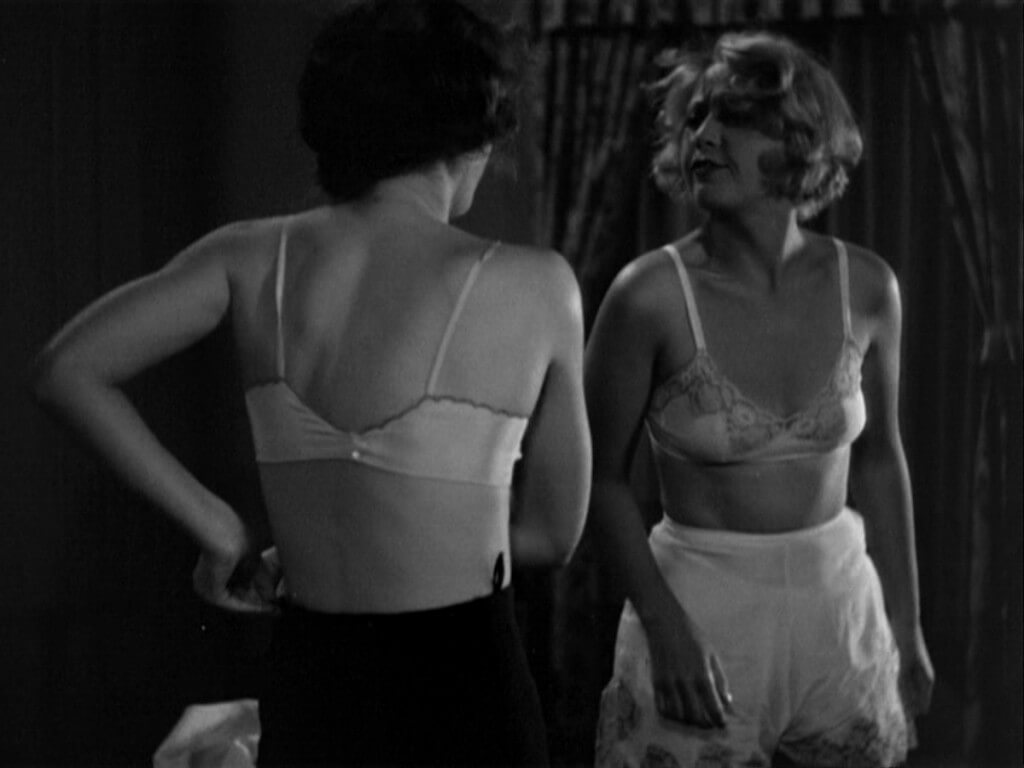
Night Nurse, 1931. While not quite as luxe as other example in this article, you can still see the ubiquity of the unstructured, wirefree bralette (underwire bras were still more of a concept at this point; they wouldn't become popular until the 50s). I also like this photo because it shows the back of the bra and what appears to be a button closure instead of a hook and eye.
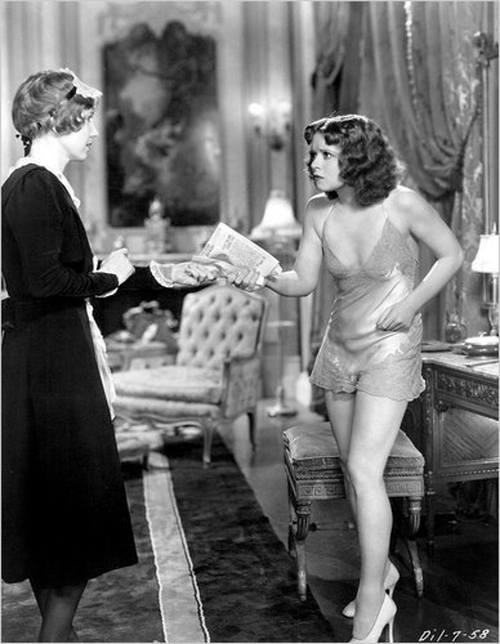
Call Her Savage, 1932. Another brilliant example of a romper that wouldn't be out of place today. I immediately thought of the label Mary Green which went out of business two years ago. They just missed the resurgence of all the garments they were most known for.
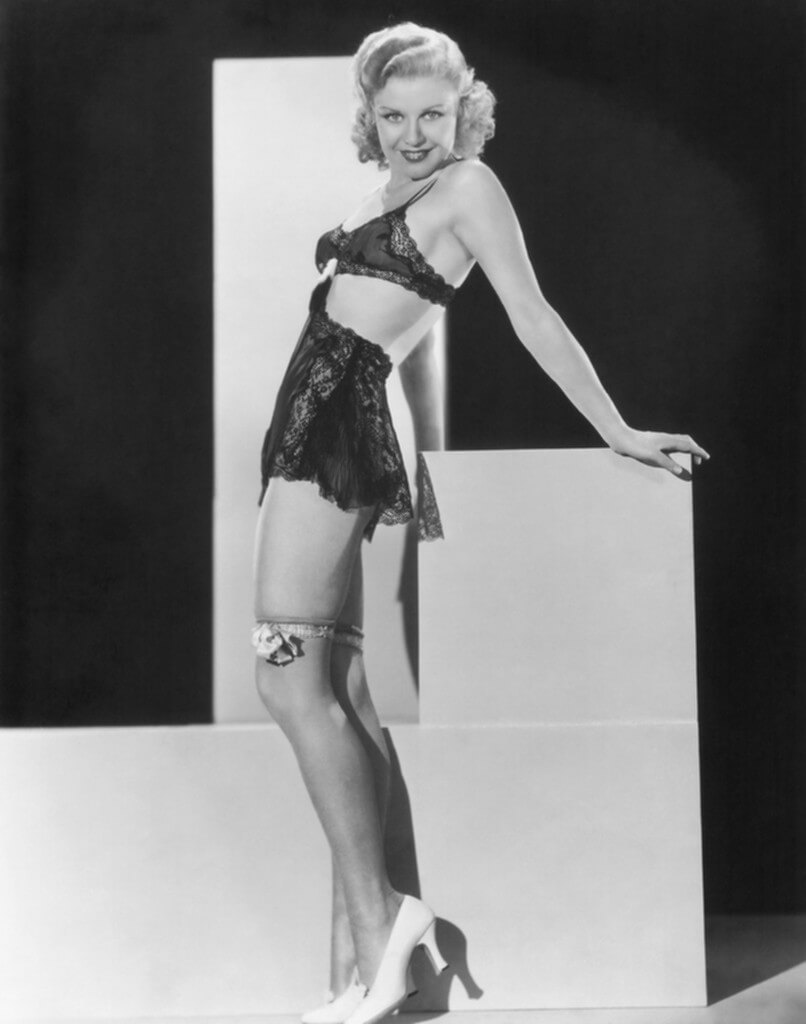
Professional Sweetheart, 1933. While I'd be happy to own almost anything from this article, the one-piece shown here is my favorite. Interestingly, you see the genesis of several lingerie trends within this garment, from provocative side cutouts to the beginnings of what we'd call a teddy. I also love this as an example of 1930s artisanship - note the pleated panel on the side of the leg.
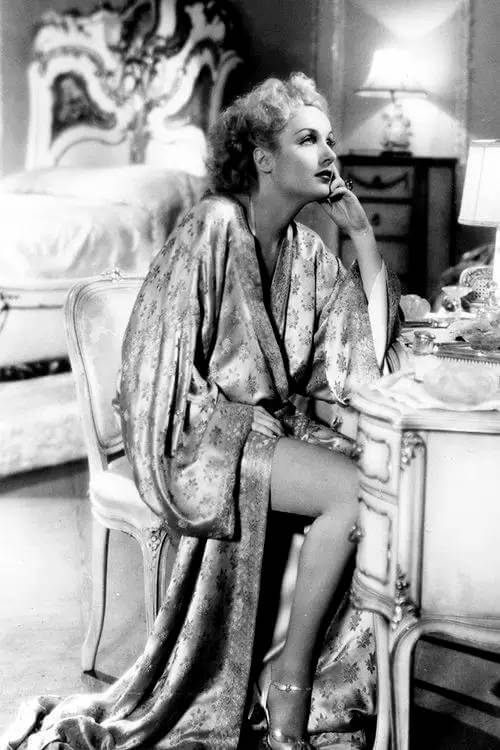
Twentieth Century, 1934. Very often, when I'm looking at vintage photos, I find myself wishing there were pictures of these garments available in color. This is absolutely one of those times. While the lustre and sheen of this vintage jacquard is obvious (and probably also silk), I'd love to have a sense of what the colors were like in person. I'm imagining a gold background with multicolored floral bouquets. What about you?
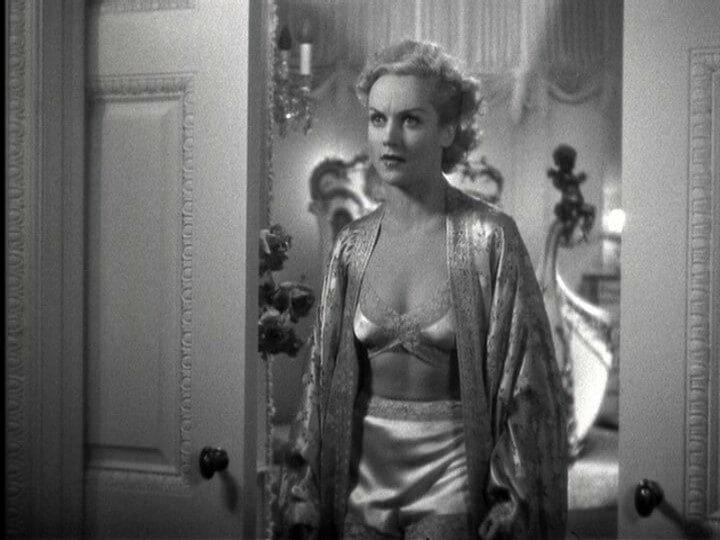
Twentieth Century, 1934. From the same film above, we get another view of the robe but also of that classic triangle bra silhouette combined with tap pants (very much akin to sleep shorts today).
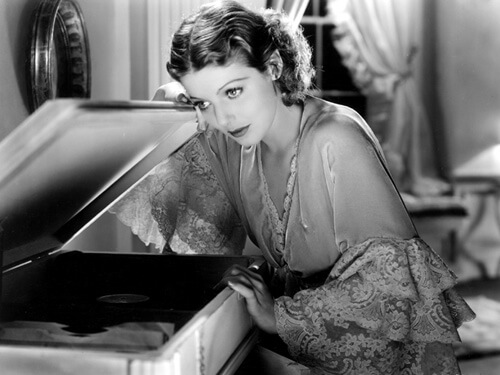
Born to Be Bad, 1934. This dressing gown from the mid-1930s features layers of ruffled lace trim, but the silhouette is almost demure compared to some of the pieces from earlier in this article, signaling a decisive end to the Pre-Code Era.





